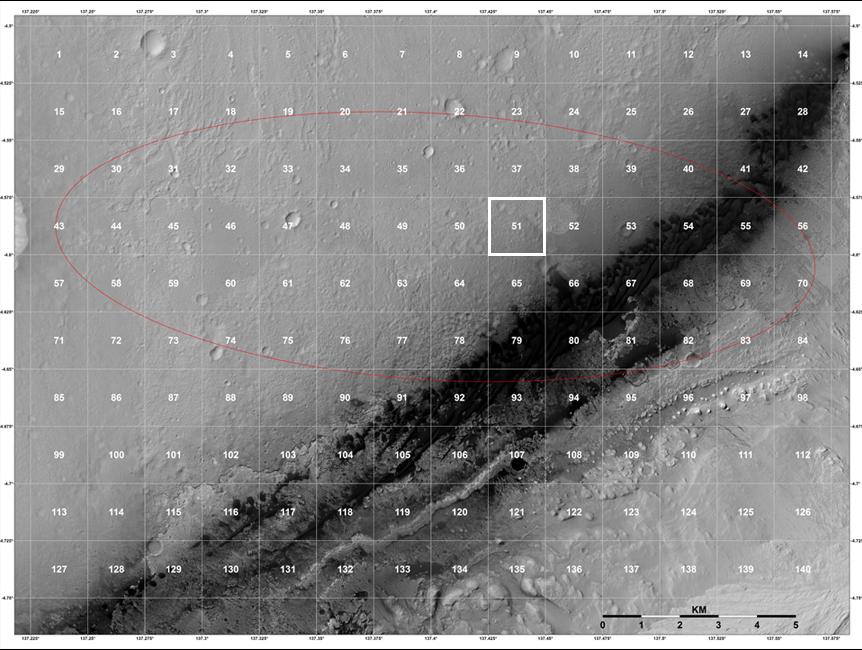It's sol 22 as of this writing and Curiosity is heading east! It's destination: the Glenelg junction around 400m ahead where 3 types of rock units have occur together.You can see these 3 units in the image below converging on the red dot marking the junction.
 |
| The Neighbourhood. Curiosity's current destination, 'Glenelg' lies 400m to the east. (Commons) |
The team played the music 'Hit the Road Jack' to mark the beginning of sol 22 and to mark this drive which is the third so far and the longest yet: 16m to be precise heading eastwards. The last two drives were all about testing the mobility system's performance.
Today's drive comes as yet another mission milestone. The rover has so far tested out quite a number of instruments including the chemcam (which shoots a high power laser to vaporise materials at a distance to measure the chemical composition. It's first 'victim' was a basaltic rock called 'coronation') and the DAN (Dynamic Albedo of Neutrons) which is a really handy tool to have because it allows the detection of water ice beneath the surface. A version of it exists aboard the orbiting Mars Odyssey which has allowed mapping of the planet's hydrogen content beneath surface (hydrogen implies water H2O).
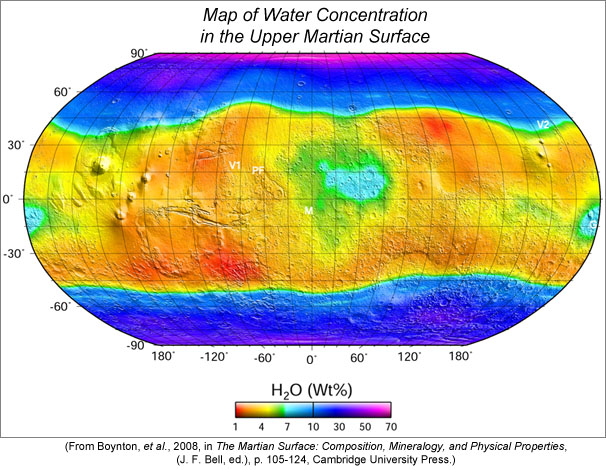 |
| Derived H2O map from Mars Odyssey. DAN is set to find out if ice is underneath Gale. |
Let's not forget the SAM (Sample Analysis at Mars) instrument which is by far I think the most impressive in the sense that they have actually managed to squeeze an instrument that would occupy a lab in to something about the size of your average microwave oven.
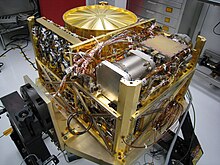 |
| SAM on Earth. SAM sits inside Curiosity. (Commons) |
SAM in essence IS an oven which can heat samples of soil and rock material to 1000 degrees Celsius and with the help of pipes, pumps and spectrometers of different kinds it reads out what compounds you're dealing with in your sample. Pretty slick! The number one question dealt with by this instrument is the question of Mars' organics (compounds containing carbon and hydrogen as the main constituent elements). Organics are important because they are usually associated with life. Whether Mars has any is an unanswered question. Past efforts in the Viking missions and the recent Phoenix mission have all come out zilch. A variety of reasons can be invoked to account for the absence of organics. The reason for the persistence is that even in the most barren terrestrial wastelands you still fins these compounds. Mars is pretty barren so if we DO find them, it would open up a whole Pandora's box of scientific inquiries especially with concern as to their origins.
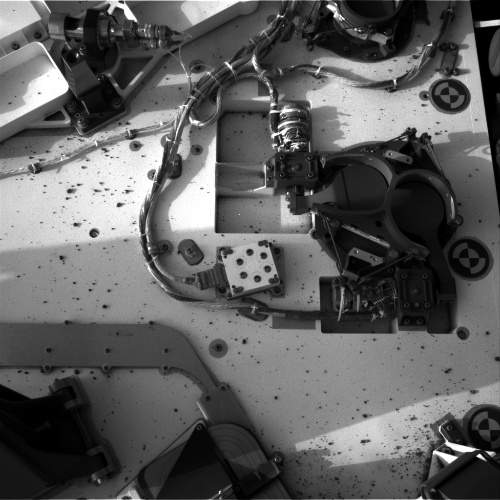 |
| Sol 2 image of the rover deck. You can see the 2 tennis paddle shaped lids covering inlets into SAM right centre (NASA/JPL) |
SAM recently opened it's lids to receive Martian air for it's first analysis as well as to evacuate any trace of terrestrial air still inside (it turned out that there was a lot of air still inside). A sample of earth's air was used for calibration purposes.
So we're off! Hopefully this is going to be one sweet ride!
It's now Sol (Martian day) 22 of the mission. Stay tuned.
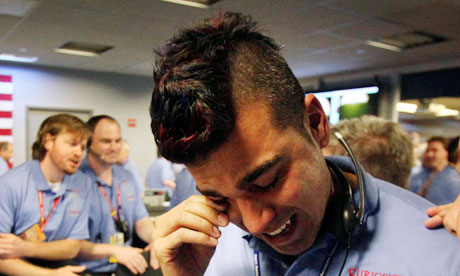







_-cropped-.jpg/488px-Ray_Bradbury_(1975)_-cropped-.jpg)


